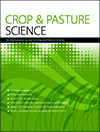Increasing wheat (Triticum aestivum) yield and protein content is essential to feed a growing global population. Achieving this sustainably is critical, as excessive nitrogen fertiliser use contributes to water pollution and greenhouse gas emissions. Inoculation with a newly discovered bacterium (RMBMTa1) isolated from soil grown with wheat increased wheat yield in a pot trial and increased grain protein content in both pot and field trials. This bacterium may increase the access of wheat roots to nitrogen, offering a promising tool to contribute to sustainable agriculture.
CP24221 Abstract | CP24221 Full Text | CP24221PDF (3.4 MB) | CP24221Supplementary Material (1.1 MB) Open Access Article





